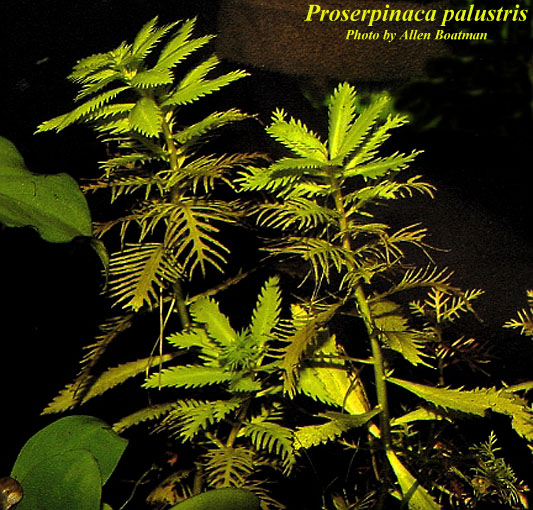Difference between revisions of "Proserpinaca palustris"
(→Description) |
(→Distribution) |
||
| Line 27: | Line 27: | ||
==Distribution== | ==Distribution== | ||
| + | ''P. palustris'' can be found throughout the eastern United States, as far west as Texas, as well as Ontario and Quebec, Canada. <ref name= "USDA"> [https://plants.usda.gov/core/profile?symbol=CEAM USDA Plant Database]</ref> | ||
| + | |||
==Ecology== | ==Ecology== | ||
===Habitat=== <!--Natural communities, human disturbed habitats, topography, hydrology, soils, light, fire regime requirements for removal of competition, etc.--> | ===Habitat=== <!--Natural communities, human disturbed habitats, topography, hydrology, soils, light, fire regime requirements for removal of competition, etc.--> | ||
Revision as of 19:32, 24 May 2018
| Proserpinaca palustris | |
|---|---|

| |
| Photo by Allen Boatman hosted at Atlas of Florida Plants | |
| Scientific classification | |
| Kingdom: | Plantae |
| Division: | Magnoliophyta - Flowering plants |
| Class: | Magnoliopsida - Dicots |
| Order: | Haloragales |
| Family: | Haloragaceae |
| Genus: | Proserpinaca |
| Species: | P. palustris |
| Binomial name | |
| Proserpinaca palustris L. | |

| |
| Natural range of Proserpinaca palustris from USDA NRCS Plants Database. | |
Contents
Taxonomic Notes
Synonym: none
Variety: Proserpinaca palustris var. amblyogona (Fernald), Proserpinaca palustris var. crebra (Fernald & Griscom)
Description
P. palustris is a perennial forb/herb of the Haloragaceae family that is native to North America.[1]
Distribution
P. palustris can be found throughout the eastern United States, as far west as Texas, as well as Ontario and Quebec, Canada. [1]